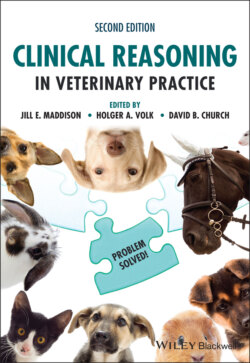Читать книгу Clinical Reasoning in Veterinary Practice - Группа авторов - Страница 27
The problem‐based approach
ОглавлениеProblem‐based approach means different things to different people, and you may have already read about or been to courses where it was discussed. Some regard the problem‐based approach as meaning ‘write a problem list, then list every differential possible for every problem.’ Not a feasible task unless you have an amazing factual memory and endless time! Others view the problem‐based approach as meaning ‘write a problem list, then list your differentials.’ This is really just a form of pattern recognition, but at least it makes a good start by formulating a problem list.
The basis of this book is the concept of logical clinical problem‐solving (LCPS). This approach provides steps to bridge the gap between the problem list and the list of differential diagnoses via a structured format. The problems should be investigated by rigorous use of the following questions as illustrated in Figure 2.2:
What is the problem? (Define +/‐ refine the problem – some problems do not need to be refined, others do.)
What system is involved, and how is it involved? (Define and refine the system.)
Where within the system is the problem located? (Define the location.)
What is the lesion? (Define the lesion – the differential list.)
The answers to these questions or the pursuit of the answers will determine the appropriate questions to ask in the history. They may alert you to pay particular attention to aspects of the physical examination, and/or they may indicate the most appropriate diagnostic test to use to find the answers as well as prepare you intellectually to assess the results of diagnostic procedures.
